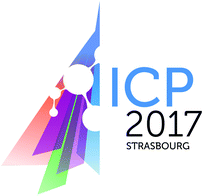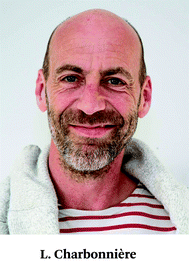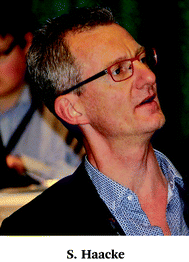28th International Conference on Photochemistry (ICP 2017): an introduction by the Guest Editors
L.
Charbonnière
 a and
S.
Haacke
a and
S.
Haacke
 b
b
aUniversity of Strasbourg – CNRS, Inst. Pluridiscipliniaire Hubert Curien, 23 rue du Loess, F-67037 Strasbourg Cedex 2, France
bUniversity of Strasbourg – CNRS, Inst. de Physique et Chimie des Matériaux de Strasbourg, 23 rue du Loess, F-67034 Strasbourg Cedex, France
The conference attracted over 520 participants including Nobel laureate J.-P. Sauvage, 13 plenary and 37 invited speakers, as well as 215 graduate and PhD students. The majority of the attendees came from European countries (e.g. France 32%, Germany 14%), but the second most represented country was Japan (17%), making Asia the 2nd strongest continent at ICP2017 (23%). Beside the plenary and invited lectures, the scientific program featured 230 oral and 242 poster contributions. Thanks to financial support from the scientific networks and editors, including the RSC, 14 poster prizes were awarded to excellent presentations of the younger scientists, in particular PhD students.
Such a large amount of contributions, plus sufficient time for discussion, required four parallel topical sessions, covering (i) Fundamental photochemistry & photophysics, (ii) Molecular and inorganic materials, (iii) Photocatalysis, solar fuels and solar cells, (iv) Photochemistry for biophotonics and photobiology, (v) New concepts & methods in theoretical photochemistry, (vi) New frontiers in ultrafast photochemistry, (vii) Photochemistry and plasmonics, and (viii) Spectroscopy of single molecules and nanostructures.
Along these lines, the present special collection highlights some of the contributions made by the participants of the conference, gathered in twenty-two regular research papers, two communications and two perspectives (review-type articles). The perspectives by H. A. Schwartz et al. (Photochem. Photobiol. Sci., 2018, 17, 864–873; DOI: 10.1039/C7PP00456G), and G. Zampini et al. (Photochem. Photobiol. Sci., 2018, 17, 995–1002; DOI: 10.1039/C8PP00022K) both report how the advanced design of inorganic or hybrid nanostructures is used in their labs to intimately control the photo-physical properties of organic molecules. The Cologne/Karlsruhe group presents a detailed account on the properties and perspectives offered by stimuli-responsive and flexible hybrid materials, which are made of metal–organic frameworks loaded with different types of photo-chromic switches. In the contribution from the Padua group, plasmonic nanostructures are shown to be able to control the fluorescence deactivation processes of a large range of organic dyes, including formation of reactive oxygen species in the case of protoporphyrin IX. The topical breadth of ICP is reflected in the other twenty-four research papers, reporting spotlights or extended accounts of the latest advances in fundamental photo-physical and -chemical processes (e.g. dynamic solvation, excited state electron/proton transfer), nano-material design for improved and controlled fluorescence properties, organic photo-activated molecular motors, new molecules and materials for organic photo-voltaics and solar fuels, new theoretical and computational concepts, and new approaches for bimolecular photo-chemistry (e.g. DNA) and biophotonics. The present special collection is not exhaustively representing all ICP topics, but reflects faithfully the high scientific standard of this important, long-established bi-annual meeting.
The guest editors wish to express their gratitude to all the authors for their contributions to this special collection and thank the editorial staff of Photochemical & Photobiological Sciences for their assistance. Join ICP 2019 on Facebook (https://www.facebook.com/ICP2019/)
.
| This journal is © The Royal Society of Chemistry and Owner Societies 2018 |



